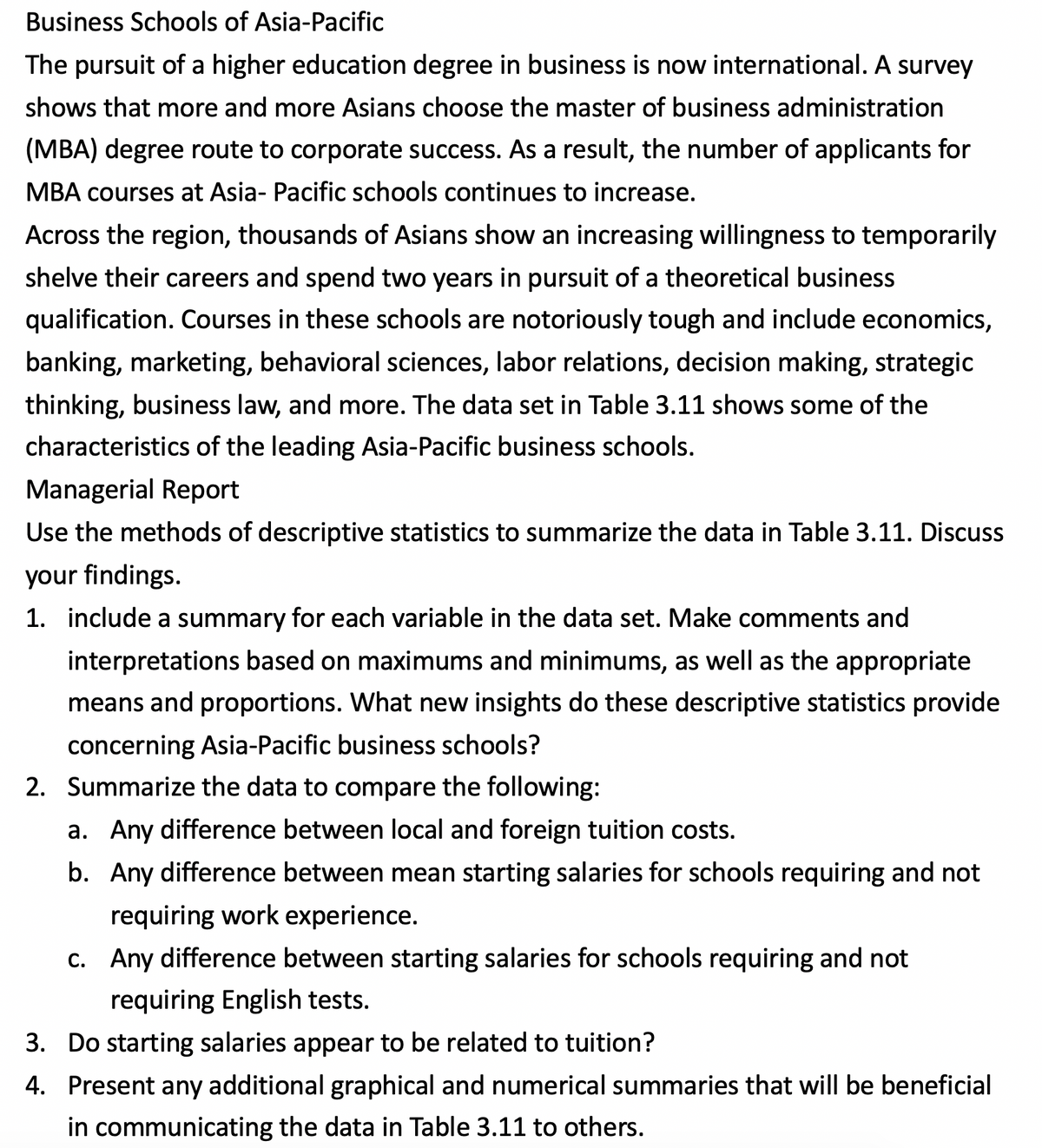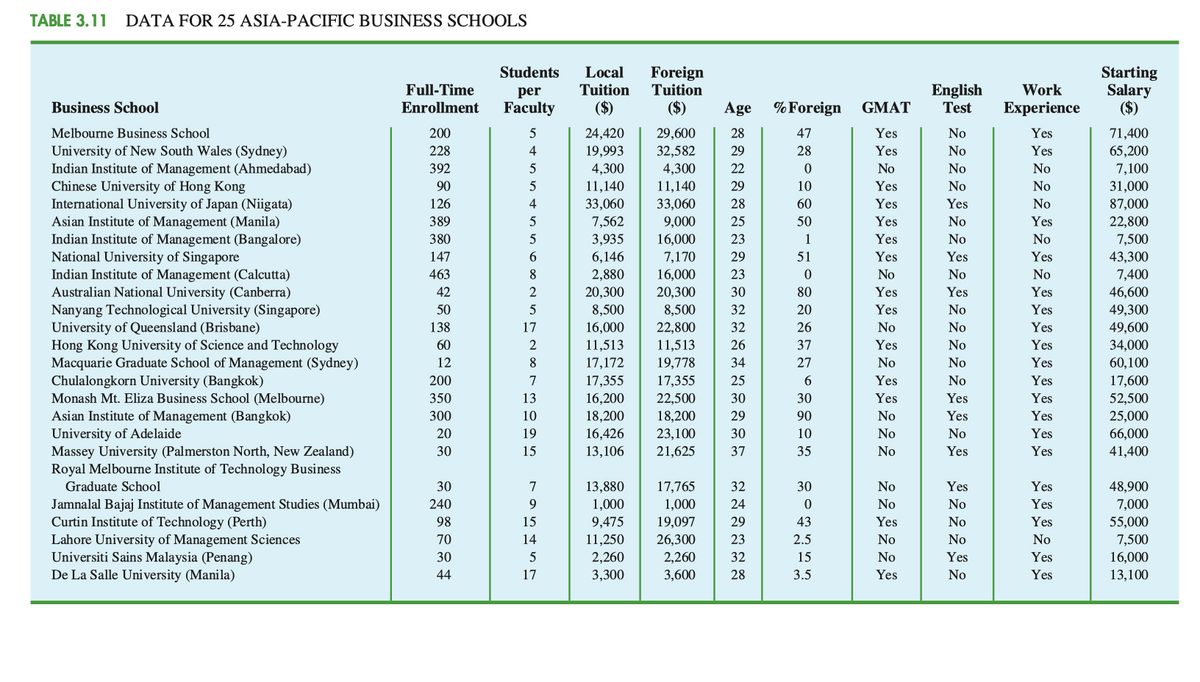Business Schools of Asia-Pacific The pursuit of a higher education degree in business is now international. A survey shows that more and more Asians choose the master of business administration (MBA) degree route to corporate success. As a result, the number of applicants for MBA courses at Asia- Pacific schools continues to increase. Across the region, thousands of Asians show an increasing willingness to temporarily shelve their careers and spend two years in pursuit of a theoretical business qualification. Courses in these schools are notoriously tough and include economics, banking, marketing, behavioral sciences, labor relations, decision making, strategic thinking, business law, and more. The data set in Table 3.11 shows some of the characteristics of the leading Asia-Pacific business schools. Managerial Report Use the methods of descriptive statistics to summarize the data in Table 3.11. Discuss your findings include a summary for each variable in the data set. Make comments and interpretations based on maximums and minimums, as well as the appropriate means and proportions. What new insights do these descriptive statistics provide concerning Asia-Pacific business schools? Summarize the data to compare the following: a. Any difference between local and foreign tuition costs. b .Any difference between mean starting salaries for schools requiring and not requiring work experience. c. Any difference between starting salaries for schools requiring and not requiring English tests. 3. Do starting salaries appear to be related to tuition? 4. Present any additional graphical and numerical summaries that will be beneficial in communicating the data in Table 3.11 to others. Can you please solve the problem by Excel?
Business Schools of Asia-Pacific
The pursuit of a higher education degree in business is now international. A survey shows that more and more Asians choose the master of business administration (MBA) degree route to corporate success. As a result, the number of applicants for MBA courses at Asia- Pacific schools continues to increase.
Across the region, thousands of Asians show an increasing willingness to temporarily shelve their careers and spend two years in pursuit of a theoretical business qualification. Courses in these schools are notoriously tough and include economics, banking, marketing, behavioral sciences, labor relations, decision making, strategic thinking, business law, and more. The data set in Table 3.11 shows some of the characteristics of the leading Asia-Pacific business schools.
Managerial Report
Use the methods of
- include a summary for each variable in the data set. Make comments and interpretations based on maximums and minimums, as well as the appropriate means and proportions. What new insights do these descriptive statistics provide concerning Asia-Pacific business schools?
- Summarize the data to compare the following:
a. Any difference between local and foreign tuition costs.
b .Any difference between mean starting salaries for schools requiring and not requiring work experience.
c. Any difference between starting salaries for schools requiring and not requiring English tests.
3. Do starting salaries appear to be related to tuition?
4. Present any additional graphical and numerical summaries that will be beneficial in communicating the data in Table 3.11 to others.
Can you please solve the problem by Excel?


Trending now
This is a popular solution!
Step by step
Solved in 2 steps with 1 images









